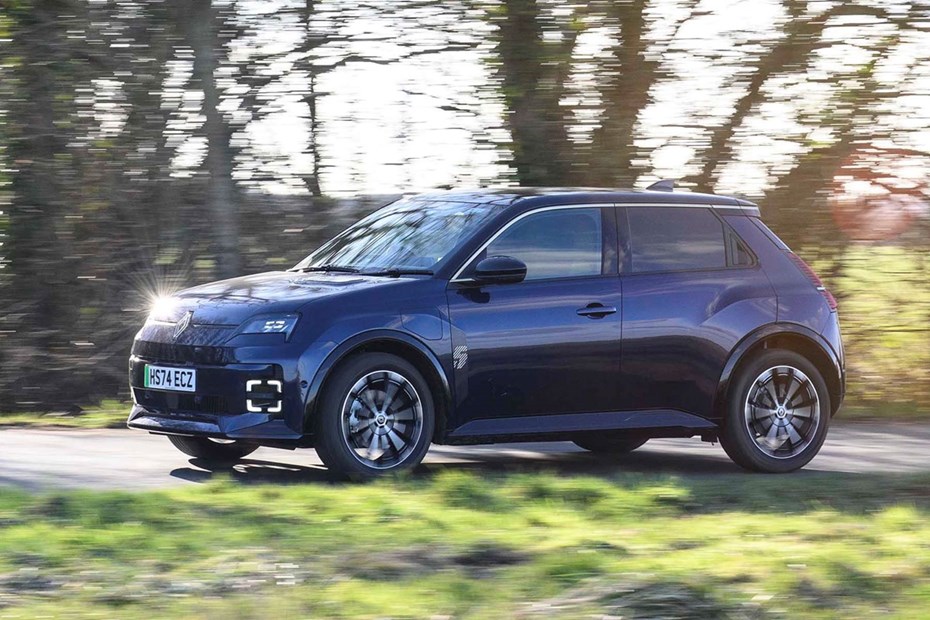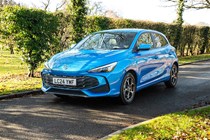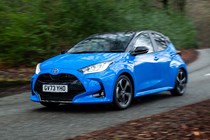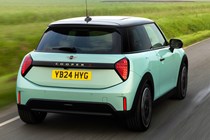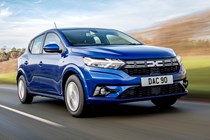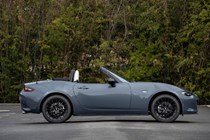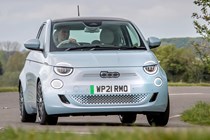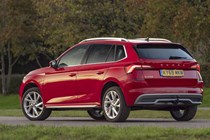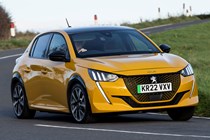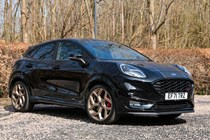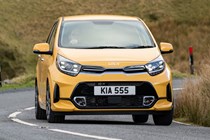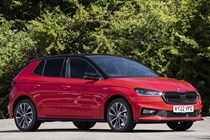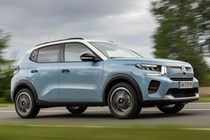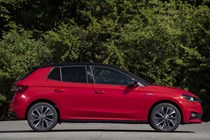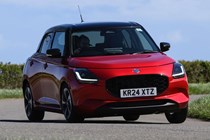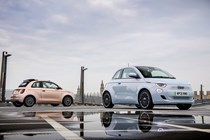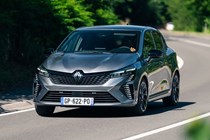When the Ford Fiesta was killed off in 2023 we thought that might be it for the small car sector in general. Buyers, it seemed, were so much more interested in small SUVs that the traditional compact hatchback was in danger of dying out altogether. But now here we are in 2025, and some of the best cars you can buy are now also the smallest.
As car makers chase the golden ratio between affordability and desire, the supermini car has come back into fashion as an opportunity for designers and engineers to really strut their stuff. This is especially the case for small electric cars, several of which feature here, crossing over into our general list of the best small cars of any kind – in fact, our favourite small car of all right now is the electric-only Renault 5 E-Tech.
But don’t worry if an electric vehicle (EV) isn’t for you. On this page you’ll find our Top 10 small cars in order of preference, and the list covers everything from dedicated electric models to conventional pure petrol choices. We’ve also considered every budget, with brand new pricing starting at under £15,000 – though you’ll clearly see some premium options, too. These are the best small cars you can buy in the UK.
Winner: the best small car to buy in 2025
The best small car you can buy - and it's electric
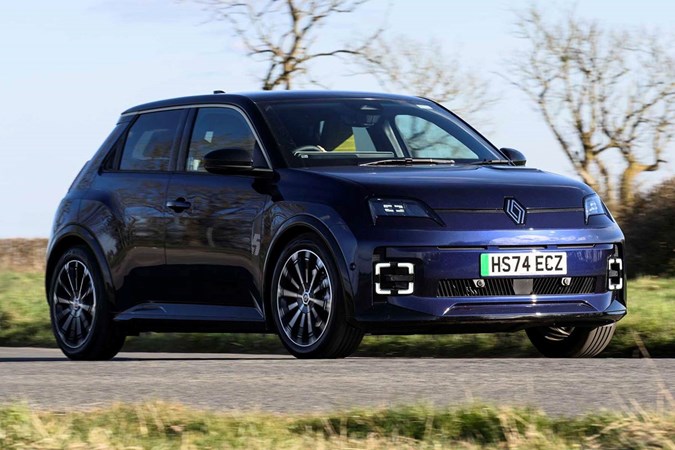

The whole experience of driving and living with a Renault 5 is special. While it’s true that the ride comfort is a little on the firm and fidgety side, real-world is more like 170 miles than the claimed 250-mile max, and that rear passenger space is somewhat tight, we’d put up with that in favour of all those funky details and the sharp and engaging driving experience. And if you want more zip, there’s always the Alpine A290 variant, one of a new breed of convincing all-electric hot hatches.
To find out more, read our full Renault 5 E-Tech review
Pros
- Great design inside and out
- Impressive interior quality
- Drives nicely and is attractively priced
Cons
- Not much space in the back seat
- Real-world driving range can be as little as 140 miles
Highly recommended: other small cars to consider
Best small car for exciting design and huge value
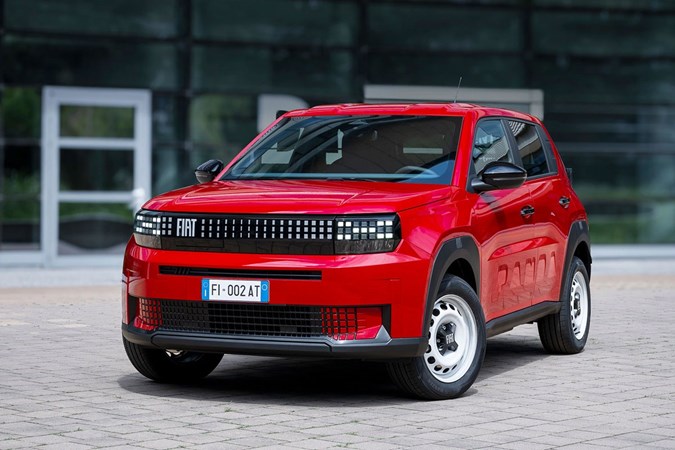

The outside, which as the name suggests is larger than the existing Fiat Panda, pulls all the right retro levers without being derivative, while the inside is a riot of unusual materials and shapes that’s like nothing else currently on the market. Standard equipment, passenger space and build quality are all attractive assets, too, while the comfortable yet keen driving experience make the Grande Panda a great companion in the city – and beyond.
To find out more, read our full Fiat Grande Panda review
Pros
- Fabulously thought-out and unusual design
- Exceptionally good value for money
- Clever interior where everything works well
Cons
- Real-world driving range for the electric version hasn't impressed so far
- Rear seats aren't super-comfortable for large adults
Best small car if you crave comfort


This makes it great value for money for a comfortable, practical supermini that’s modern, fresh and affordable. It has roomy rear seats but a slightly awkwardly shaped boot, so consider your priorities carefully. It also puts a soft and cossetting ride above sharp handling and nippy handling, so won’t be the best choice for keen drivers. Everyone else should place it pretty high up their shortlist.
To find out more, read our full Citroen C3 review and Citroen e-C3 review
Pros
- Very comfortable ride
- Aggressive pricing for petrol, hybrid and electric
- Spacious inside
Cons
- A bit soft for keen drivers
- Design lacks sparkle
Best small car for all-round ease of use
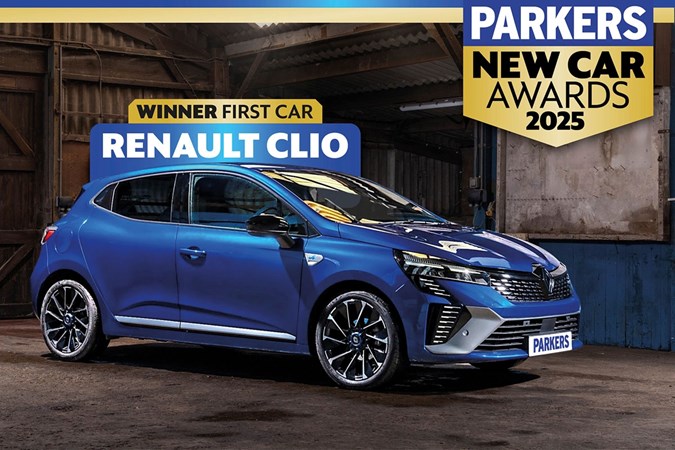

We’re less enamoured of the slightly clunky self-charging hybrid drivetrain, and the Clio is a small car with a generous boot but not much space for rear passengers. But the pros far outweigh the cons here – so we say put those issues to one side and reveal instead in the remarkably supple suspension and easy-to-use infotainment system. Renault is also notable for consistently having some of the best finance deals of all car makers, helping to make the Clio affordable, too.
To find out more, read our full Renault Clio review
Pros
- Well considered driving experience
- Nicely made and attractive interior
- Often keenly priced deals to be had
Cons
- Not much rear passenger space
- Expensive hybrid system can be clunky
Best small car for a spacious interior and electric power
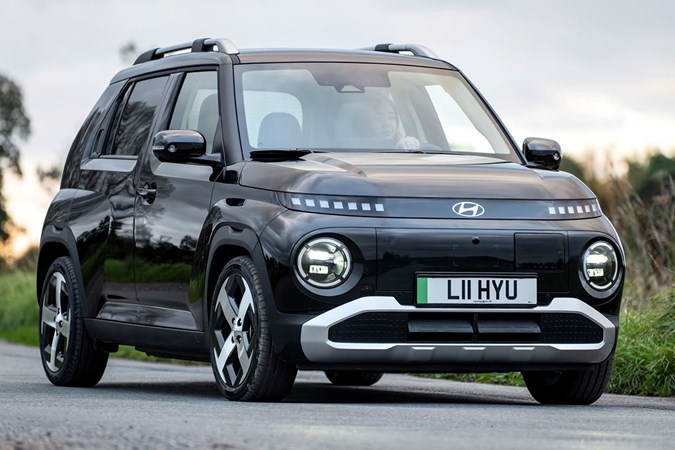

Put this together with the bold styling and the big cabin, and you’ve got a budget bargain eco warrior that’s actually useful as well. Quality inside is mostly up to the mark, but you should know that this little Hyundai only has four seats, which might limit its practicality for some buyers. We also had some reservations about the ride comfort of the early versions we’ve driven so far, but this is a minor complaint in the face of all the Inster’s positive attributes.
To find out more, read our full Hyundai Inster review
Pros
- Very roomy inside
- Attractively priced for a small, practical EV
- Generally good to drive and well equipped
Cons
- Only four seats
- The ride can be a bit crashy
Best small car for premium feels
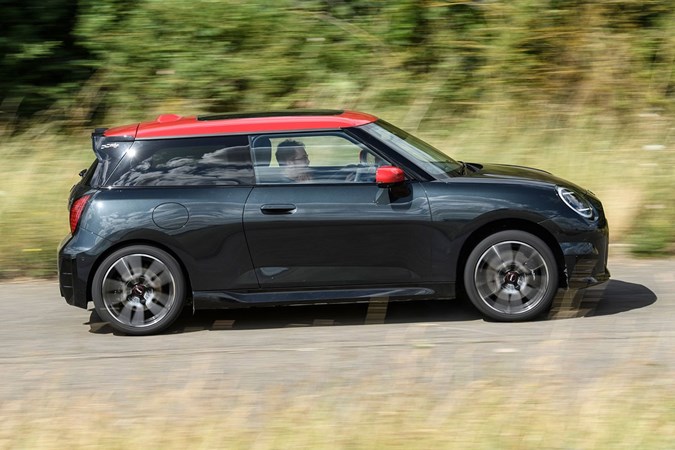

This makes the EV slightly sharper to drive, and that bit fitter-feeling for motoring in 2025. It also offers plenty of choice, with power outputs ranging from 184hp to 258hp and battery options that will take you between 180 and 250 miles WLTP. If electric won’t work for you, however, there’s no real reason to fret, as the petrol models are still grin machines in their slightly more archaic way. None of them have much rear passenger space – another typical MINI trait – but the interior design works well and for the money few other cars feel so upmarket.
To find out more, read our full MINI Cooper review and Mini Cooper Electric review
Pros
- Really good fun to drive
- Classy, modern interior
- Punchy performance - especially from the EV
Cons
- Driving enthusiasts will mourn the lack of manual transmission
- Rear passengers get a really raw deal
Best small car for no-nonsense conventionality and value


You’re unlikely to feel shortchanged in any department. The Fabia has the tech to match its siblings, a lovingly crafted and sensibly laid out cabin, and a polished driving experience. It isn’t as vivacious and fun to drive as some of the cars on this list, but it rides well and the interior is spacious for people and luggage. Only other downside is the lack of electrified drivetrain options, but if you just want a sensible, efficient, well put together conventional small car, the Fabia is a sure-fire hit.
To find out more, read our full Skoda Fabia review
Pros
- Plenty of space in the cabin - and the boot
- Big feel to the driving experience
- Lots of choice delivering strong value
Cons
- No hybrid, diesel or electric variants
- Not as exciting as others on this list
Best small car if you want a self-charging hybrid
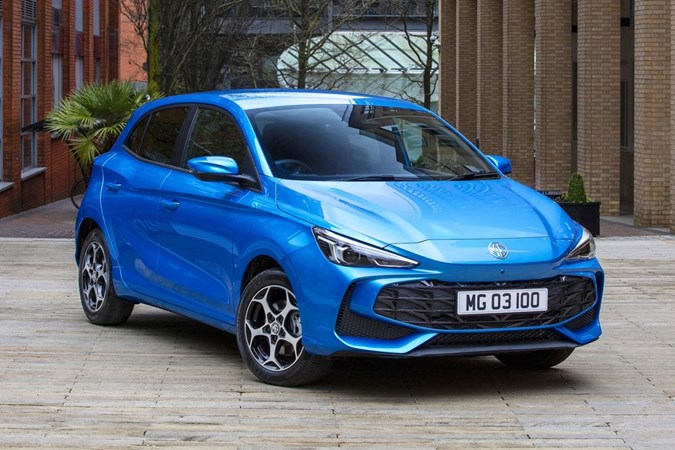

We say the hybrid system is similar, but whoever specced it seems to have gotten rather carried away – the 1.5-litre petrol and electric motor fitted here offer a combined 194hp, which isn’t far off hot-hatch levels of power. The MG3’s response isn’t always as eager as that figure would suggest, but it’s a rapid little thing and can also easily top a real-world 50mpg. With a big boot, lots of standard equipment and a comfortable ride, it’s quite the all-round over-achiever.
To find out more, read our full MG3 Hybrid+ review
Pros
- A very powerful hybrid system
- Capable of over 50mph in the real world
- Spacious cabin
Cons
- We're not fans of the unsupportive front seats
- Doesn't always feel that fast on the road
Best small car for back-to-basics fun and efficiency


This does also result in it feeling rather tinny, and the three-star Euro NCAP rating isn’t especially reassuring. However, low weight is for great fuel efficiency, and the interior is remarkably roomy for something so small, with a generously sized boot as well. It’s nice enough to look at inside, too, though we do wish there was less cheap plastic finishing, given the £19,699 starting price. Gladly, decent finance deals on the Swift are common.
To find out more, read our full Suzuki Swift review
Pros
- A fizzy, engaging driving experience
- Very good fuel economy
- Spacious and attractive inside
Cons
- Feels rather tinny and low quality in places
- Only three Euro NCAP stars
Best small car for low pricing and plenty of space
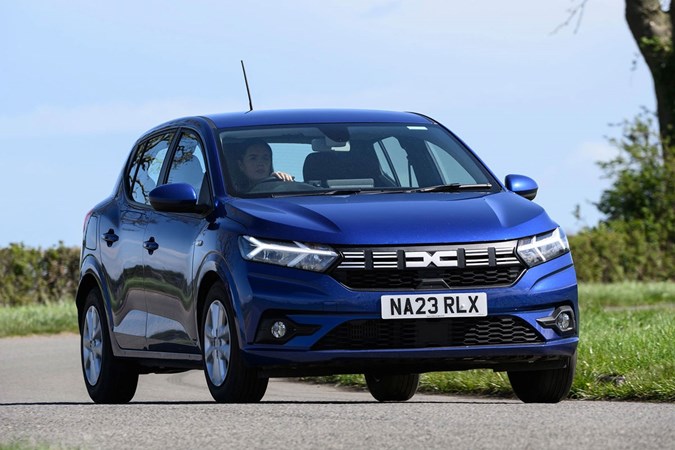

You also get lots of space, well-judged interior quality – considering the price – and some efficient turbocharged engines. However, Dacia does like to skimp on the safety kit, and as with the rest of its range, this translates into unimpressive Euro NCAP scores; the off-roady looking Sandero Stepway variant most recently tested achieved just two stars. Which is very poor for a modern car. Perhaps a nearly new alternative would be a better bet.
To find out more, read our full Dacia Sandero review
Pros
- Bigger than the class average yet costs less
- Perfectly fine to drive
- Interior quality is well judged for the price
Cons
- Noisy and not that comfortable
- Two-star Euro NCAP score
Want something smaller still? Then we have another list covering the best city cars, while our best family cars selection will appeal to those who need more space. And if you are attracted by chunky looks and a higher driving position, we do have a best small SUVs as well. We’ve driven and rated them all; find out more about how we test cars.
One to avoid
It's very cheap for an EV, but also very hard to recommend
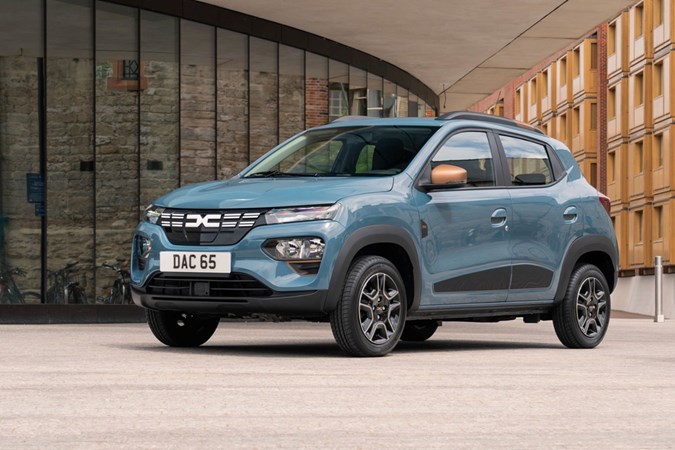

Not only does it have a dire one-star Euro NCAP rating, it has some fairly problematic basic handling traits as well, including far too much body roll and weird on-limit behaviour. And since those limits are so much lower than other cars, don’t think you won’t experience them, either. Being based on a vehicle engineered to be sold to the Indian market for the equivalent of £3,000 in 2015 does not make a good choice of car in 2025. Avoid.
To find out more, read our full Dacia Spring review
Pros
- Cheap
- Some clever design details
- Tight turning circle
Cons
- Terrible to drive
- One-star Euro NCAP rating
FAQs: small car buying guide
-
What is a good small car to buy?
Ah! An easy one to start – any of the small cars on the list above should serve you brilliantly well. As you’ve hopefully seen, our Top 10 covers a wide range of budgets, uses and customer needs and expectations. Our top overall and pure electric small car choice is the Renault 5 E-Tech, the Fiat Grande Panda offers electric and hybrid options at very attractive pricing, and the Renault Clio is the best conventional small car you buy.
-
What is the most reliable small car?
If reliability is your major priority we’d suggest you start by looking at the Toyota Yaris (also sold in rebadged form as the Mazda 2 Hybrid) or the Honda Jazz. These Japanese brands have an excellent reputation for dependability for very good reason. Wondering why they’re not included in the Top 10 above? The MG3 Hybrid+ is a better all-round small hybrid these days, which makes it a better choice overall than the still very impressive Yaris. The Honda Jazz has a clever interior, but it’s also rather expensive. Both are still worth adding to your extended shortlist.
-
What’s the best small automatic car?
Need a small auto? Great news – these days you’ll be spoilt for choice, as carmakers are generally moving away from manual gearboxes and almost all of the cars in our Top 10 are available with self-shifting capability. This starts with our favourite overall, the Renault 5 E-Tech, which as an electric car utilises a single-speed transmission. As you work down the list you’ll find all of the self-charging hybrids – and even some of the mild-hybrids – also come as an auto as standard. Even the Mini Cooper is auto-only these days.
-
What’s the best small car for space?
The Dacia Sandero is king when it comes to small car space. It may be the cheapest car here with arguably the least inviting interior of the pack, but what it lacks in creature comforts it certainly makes up for in room. With 328 litres on offer, the Sandero also has the largest boot of any car here, as well as the roomiest cabin. There’s plenty of headroom both fore and aft – easily enough for four six-footers – with enough shoulder room in the back to fit a couple of adults in relative comfort, which is pretty rare in this class.
-
What’s the best small car for efficiency?
The Toyota Yaris takes the win for efficiency, achieving an impressive fuel economy range of 67-74mpg, perfect for economical driving. Not to mention it’s a remarkably frugal car, propelled by a 1.5 litre, three-cylinder petrol engine coupled with a 0.7kWh battery. Unlike plug-in hybrids, it doesn’t need charging at home; instead, intelligent electronics continuously adjust power delivery between petrol and electric sources. This not only makes for a highly efficient runabout but also helps saves on today’s expensive fuel prices.
-
What's the best used small car?
The used car market is packed to the rafters with used small cars, all vying for your money. And just like with the new cars listed, some are much better than others. Not only in terms of dynamics and boot space but also reliability, long-term running costs and parts availability. That's why we're also covering the best used small cars here, to give you the fullest picture of what to buy.
There's a constant churn in the used markets – cars are always ageing, yesteryear's excellent small car buys head to the scrapie, replaced by a new breed. Try to find a Vauxhall Nova and you'll see what we mean. Our used car picks are modern enough to represent excellent value for money and are in plentiful supply on the used car market. Depending on the spec, they may even have modern touches including reversing cameras, smartphone connectivity, and advanced electronic safety measures.
New drivers often hoover up small cars, but they are also an appealing pick for city dwellers, as dependable second cars or as pint-sized daily drivers. No matter your needs, these are the best used small cars we'd recommend are at the top of any shopping list.
The head of the table, even in retirement
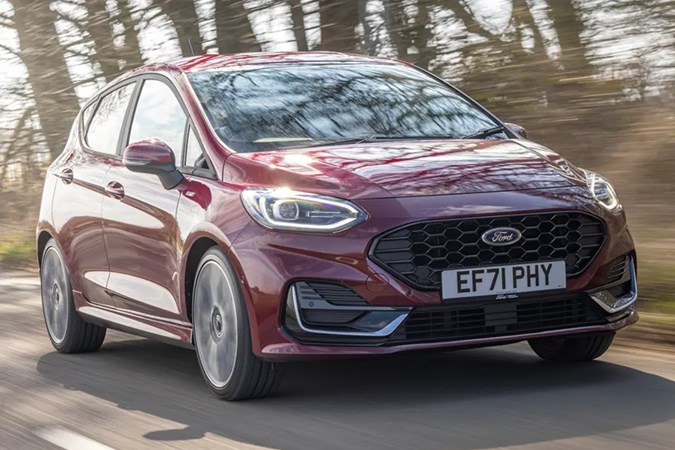

We think the final generation of Fiesta is the best used small car on sale. It offers a joyous driving experience, solid build quality and strong equipment levels. There are also loads to pick from, and parts supply is good. The biggest buying advice is to be wary of any 1.0 EcoBoost—they're nicknamed 'Ecoboom' for a good reason. The engine uses a 'wet belt' system that can disintegrate over time, causing significant damage.
To find out more, read our full Ford Fiesta used review
Pros
- Well-made
- Generously equipped
- Good to drive
Cons
- Small even by small car standards
- Some cheap interior plastics
A commodious and excellent small car
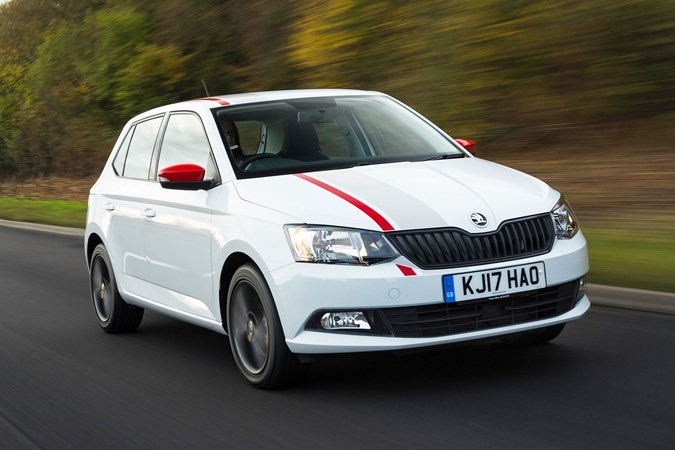

The classically handsome styling is ageing well, even 10 years after its introduction. It's a small car with a huge interior, packed with clever ergonomic touches and a class-leading (for the time) 330 litre boot. All engines and oily bits have proven dependable with age, but we'd plug for the turbocharged TSI engine, which has almost sporty performance. Our biggest buying advice? Bottom spec examples didn't even ship with air con, so be warned.
To find out more, read our full Skoda Fabia used review
Pros
- Roomy interior and boot
- Competitive entry-level prices
- Wide range of engines
Cons
- No plug-in or mild hybrid tech
- Less fun to drive than a Fiesta
The rational-hat pick
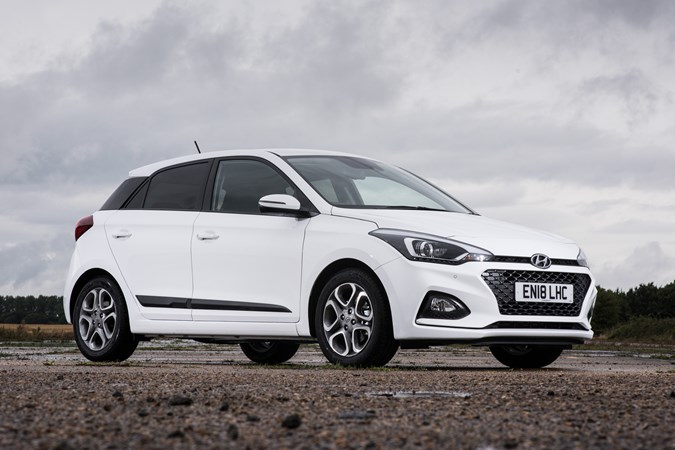

It's safe and predictable to drive, easy-to-live with, and enjoys a prominent spot in our most reliable used car article, so what's the catch? Aside from being as dull as council-issued bread, there's not a lot. We'd recommend looking for an SE model made from 2018 for advanced safety features like lane-keeping assist, automatic headlights and automatic emergency braking. We'd recommend skipping diesel i20s, they weren't all that popular and will cost extra in maintenance. Other than that, there is no bad way to buy an i20.
To find out more, read out full Hyundai i20 used review
Pros
- Comfortable ride
- Should prove reliable
- Spacious inside and in boot
Cons
- Not particularly entertaining
- Some materials poor quality
Just so you know, we may receive a commission or other compensation from the links on this website - read why you should trust us.


